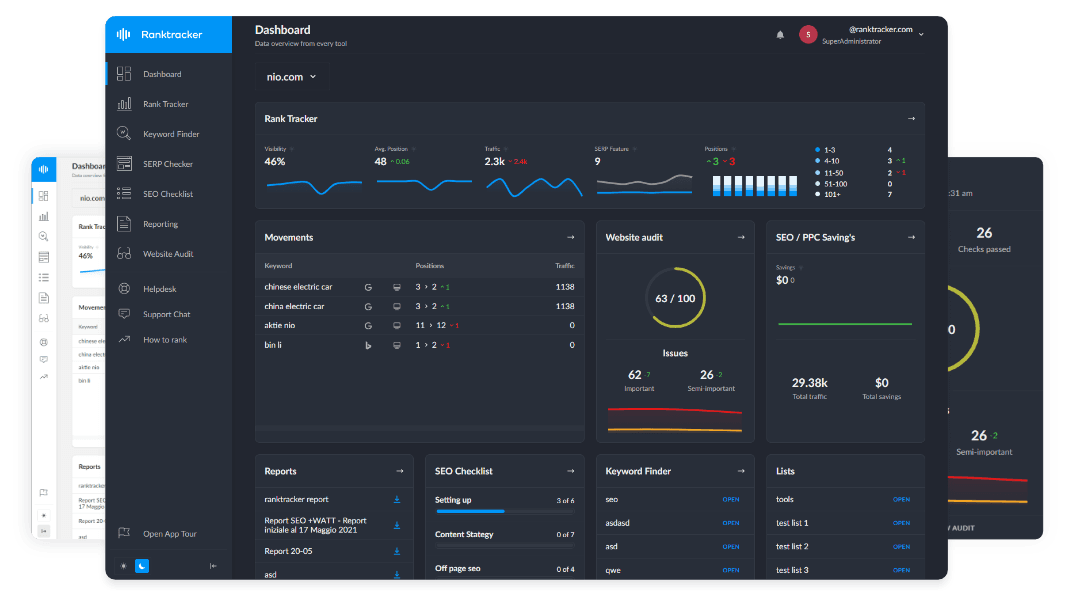Intro
Achieving higher rankings than your competitors on Google can significantly increase your website’s traffic, brand visibility, and conversions. By implementing an effective SEO strategy, you can:
- Gain more organic traffic.
- Establish authority in your industry.
- Improve click-through rates (CTR).
- Convert more visitors into customers.
Steps to Outrank Your Competitors on Google
1. Conduct a Competitive SEO Audit
Before improving your rankings, analyze what your competitors are doing right. Use tools like Ranktracker’s Competitor Analysis, Ahrefs, or SEMrush to:
- Identify your competitors' top-ranking keywords.
- Analyze their backlink profile.
- Review their content strategy and structure.
- Check their page speed and technical SEO.
2. Optimize Your Website’s On-Page SEO
Fine-tuning your website’s on-page SEO can help boost rankings:
- Use targeted keywords in meta titles, descriptions, and headers.
- Ensure keyword optimization without overstuffing.
- Improve content readability and structure.
- Optimize images and add alt text.
- Enhance internal linking for better navigation.
3. Create High-Quality, Authoritative Content
Content is king, and Google prioritizes high-value, well-structured content. To outrank competitors:
- Write in-depth, well-researched content that answers search intent.
- Use Ranktracker’s Keyword Finder to discover long-tail keywords.
- Incorporate relevant images, videos, and infographics.
- Regularly update older posts to maintain freshness.
4. Build a Strong Backlink Profile
Backlinks are crucial for increasing your domain authority and outranking competitors. Strategies include:
- Earn high-quality backlinks from authoritative websites.
- Use Ranktracker’s Backlink Checker to analyze and improve your backlink profile.
- Reach out for guest blogging opportunities.
- Leverage broken link building to gain new links.
5. Improve Technical SEO
Ensure your site is technically optimized to improve rankings:
- Enhance page speed by compressing images and optimizing scripts.
- Use schema markup for better visibility in search results.
- Ensure mobile-friendliness with a responsive design.
- Fix broken links and 404 errors.
6. Optimize for Local SEO (If Applicable)
If you have a local business, optimize for local search:
- Claim and optimize your Google Business Profile.
- Get positive reviews on Google and other directories.
- Use location-specific keywords.
- Build local citations on directories like Yelp and TripAdvisor.
7. Leverage Social Signals and Engagement
While social media may not directly impact rankings, engagement can drive traffic and improve authority:
- Share content on social media platforms.
- Encourage shares, likes, and comments.
- Participate in industry-related forums and communities.
8. Monitor and Adapt Your Strategy
SEO is an ongoing process, so track your rankings regularly:
- Use Ranktracker’s Rank Tracker to monitor keyword performance.
- Analyze changes in competitor rankings and adjust your strategy.
- Stay updated with Google algorithm changes.
Conclusion
Outranking competitors on Google requires a strategic, data-driven approach. By leveraging tools like Ranktracker’s Rank Tracker, Keyword Finder, and Backlink Checker, you can optimize your website, improve content, and gain an edge in search rankings.
Want to dominate search results? Try Ranktracker now and outrank your competition!

